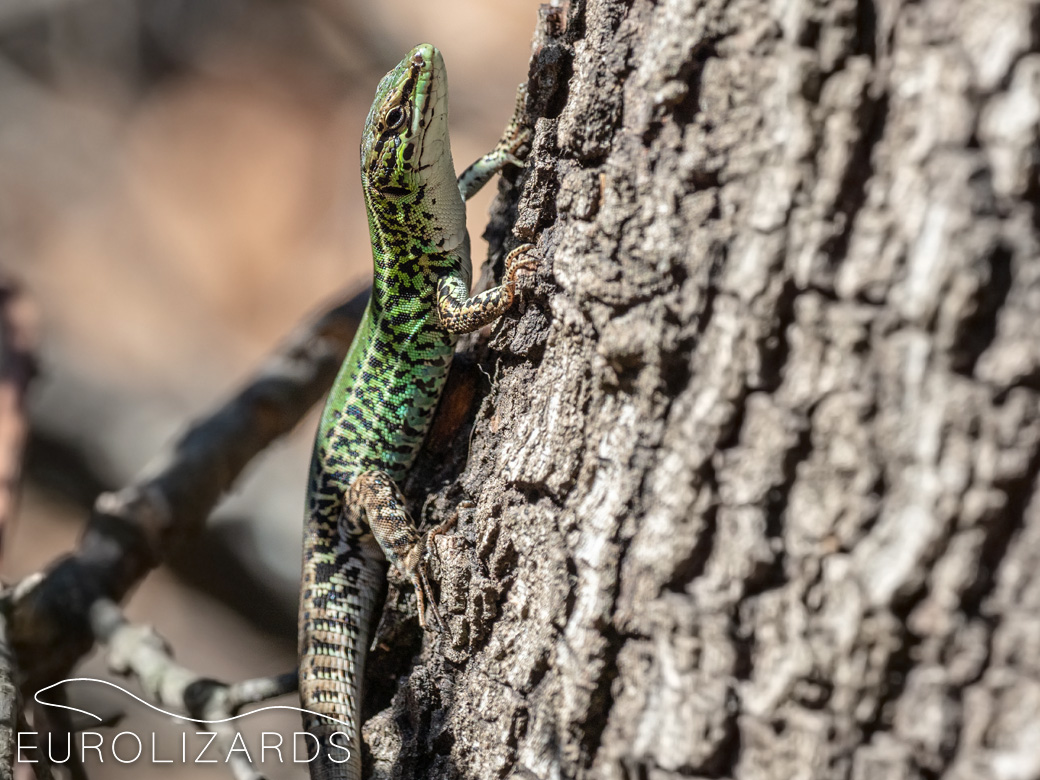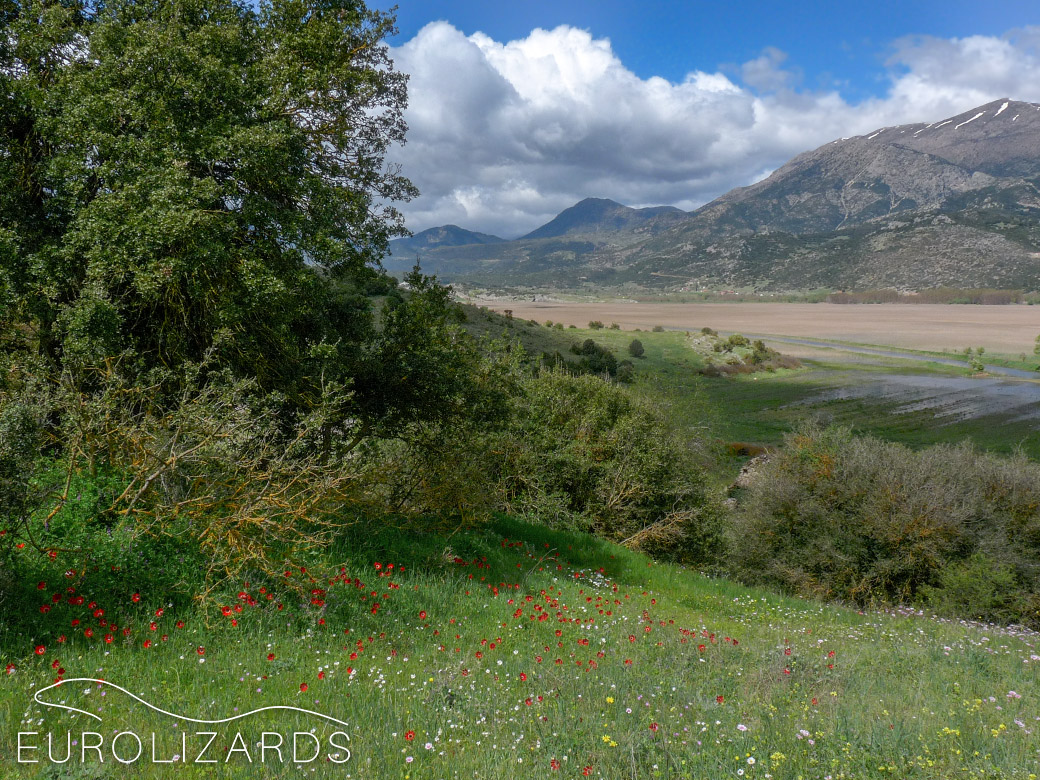Podarcis ionicus - Ionian Wall Lizard

The Ionian Wall Lizard is a good example for alternating taxonimic systematics: Initially, this species had been described by LEHRS in 1903. However, BOULENGER (1907) recognized it as a subspecies of Podarcis tauricus. Recent genetic analysis revealed that it actually should be regarded as a separate species*.
In fact, the two species show morphological differences: Podarcis tauricus has broad dark supra-dorsolateral streaks, which are reduced to single blotches in Podarcis ionicus. Therefore, the back of Podarcis ionicus appears widely green whereas Podarcis tauricus only shows a green vertebral streak. Furthermore, Podarcis ionicus tends to have more green colouration on the flanks than Podarcis tauricus. The undersides may be white, yellow or even orange.
Podarcis ionicus inhabits a wide range of well-vegetated habitats. It seems to climb more than Podarcis tauricus. Geographically, the Pindos Mountain Range acts as an efficient barrier between the two species.
The distribution range of Podarcis ionicus covers southern Albania, western Greece, the Ionian Islands (Corfu, Kefalonia, Ithaka, Zakynthos) and the Peloponnese.
It may co-occur with the following species:
- In Western Greece and on Peloponnese, Podarcis ionicus could be confused with Podarcis erhardii or Podarcis muralis. Both species have no green colouration and frequently show dark blotches on the labials which lack in Podarcis ionicus.
- On Peloponnese, Podarcis ionicus also co-occurs with Podarcis peloponnesiacus and Podarcis thais. Males of the latter ones often show bright orange but no bright green colours. Females of Podarcis peloponnesiacus and Podarcis thais have dark vertebral stripes, which usually lack in Podarcis ionicus. However, in some cases the two species may look quite similar - hence, a closer look may be required: Podarcis ionicus frequently shows a distinct brown streak between eyes and ears, which lacks in male Podarcis peloponnesiacus and Podarcis thias. Additionaly, the latter ones tend to have more prominent blue blotches on shoulders.





* PSONIS, N. & ANTONIU, A. & KUKUSHKIN, O. & JABLONSKI, D. & PETROV, B. & CRNOBRNJA-ISAILOVIC, J. & SOTIROPOULOS, K. & GHERGHEL, I. & LYMBERAKIS, P. & POULAKAKIS, N. (2017) - Hidden diversity in the Podarcis tauricus (Sauria, Lacertidae) species subgroup in the light of multilocus phylogeny and species delimitation. - Molecular Phylogenetics and Evolution, 106: 6-17.

EUROLIZARDS - The Home of European Lizards! © Birgit & Peter Oefinger
